GAP+
Kulangsu(Gulangyu), is an island that echoes the historical footprints of European colonization during the World War era and now resonates with the bustling rhythms of tourism, the internet, and commerce. In recent years, it has been celebrated as a World Cultural Heritage site. Once hailed as the “Island of Music” or the “Island of Pianos” — a reference to its imported piano culture of the last century — Kulangsu now witnesses the fading of this musical heritage.
What then, truly, is Kulangsu? It stands as an immersive collage of “elsewhere’s,” a tapestry of various identities that remain unrecognized and undefined. How do we encapsulate Kulangsu? Through pianos displayed as silent relics? Through transient images scattered across social media? Or through the ever-evolving storefronts?
What narrative captures the essence of contemporary Kulangsu — the experience of the here and now? Throughout the cycle of history, how do we generate new identity for Kulangsu?
“GAP+” emerges as a comprehensive synthesis of my explorations in algorithms, sound/media art, and installation. It embodies an experimental spirit that seeks to dissolve the boundaries of traditional architectural design. I envisage architecture as a generative system, a crucible for new forms and possibilities, fueled by diverse theoretical frameworks.
Drawing inspiration from the “live set” music concept — where the mechanisms of sound mixing shape the aural space — GAP+ offers a critical lens on the conservation of “historical” urban spaces. It constructs an auditory landscape, a soundscape that engages with the commercial-dominated urban soundscape. GAP+ redefines architectural presentation, introducing novel concepts of “real-time” and “remote” experiences within the built environment, in form of spatial instrument.
2019
CAFA Undergrad Thesis
Projection, Stereo Sound
2019 1st Place Winner of CAFA Grad Thesis
2020 Gensler Diversity Scholarship
2020 YTAA(Young Talent Architect Award) Asia – Fundació Mies van der Rohe
2024 Currents New Media Festival
Max/MSP, Grasshopper, Leap Motion


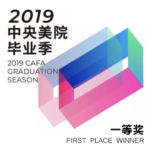
2024 Remaster
Architectures of Sound
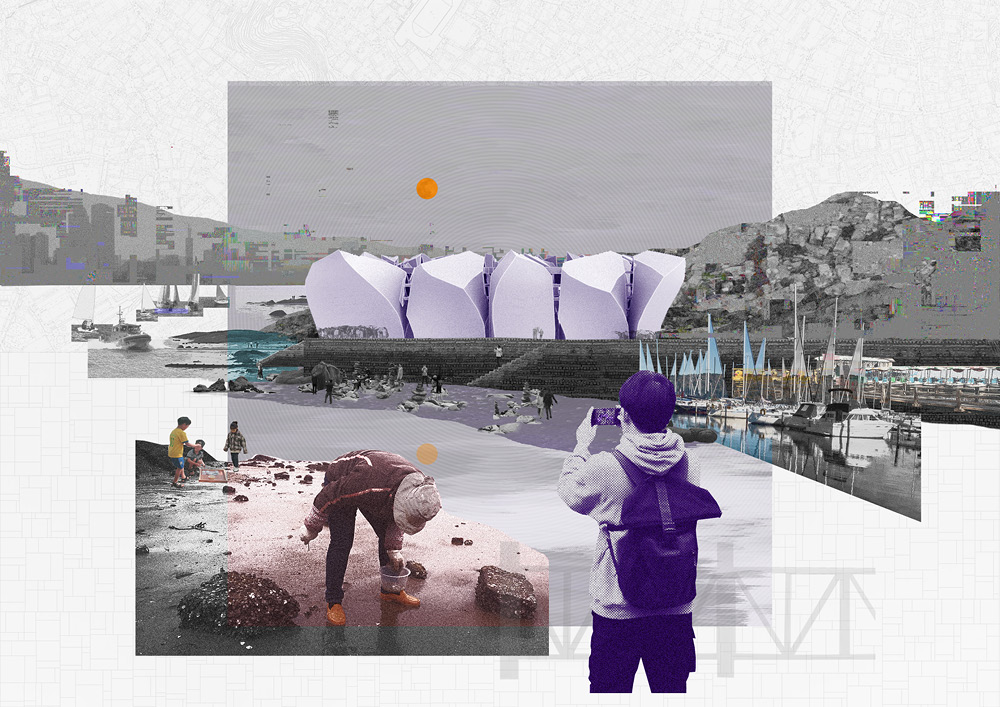
Inspired by the walk-through experience of the valley/gap soundscape on Kulangsu, which potentially serves as a filtering and connective structure for sound, new spatial structures are generated as
Through the spatialization of the Live Set framework in electronic music, which functions as an area-based quantization and mixing system, this approach delves into the mechanisms of spatialized mixing within an acoustic space, conceptualizing it as an interactive acoustic museum. Here, attenuation and physical reflection serve as the mediums for mixing, seamlessly bridging the real and virtual worlds. In this installation, gestures unlock the potential for real-time sound generation, transforming each member of the audience into a performer within the acoustic space.
The narrative gives rise to two distinct sets on different scales: “GAP+” embodies architecture, offering a structural expanse, while “GAP-” serves as an accessible instrument/installation, inviting engagement from all.
The Sensory Experience of GAP
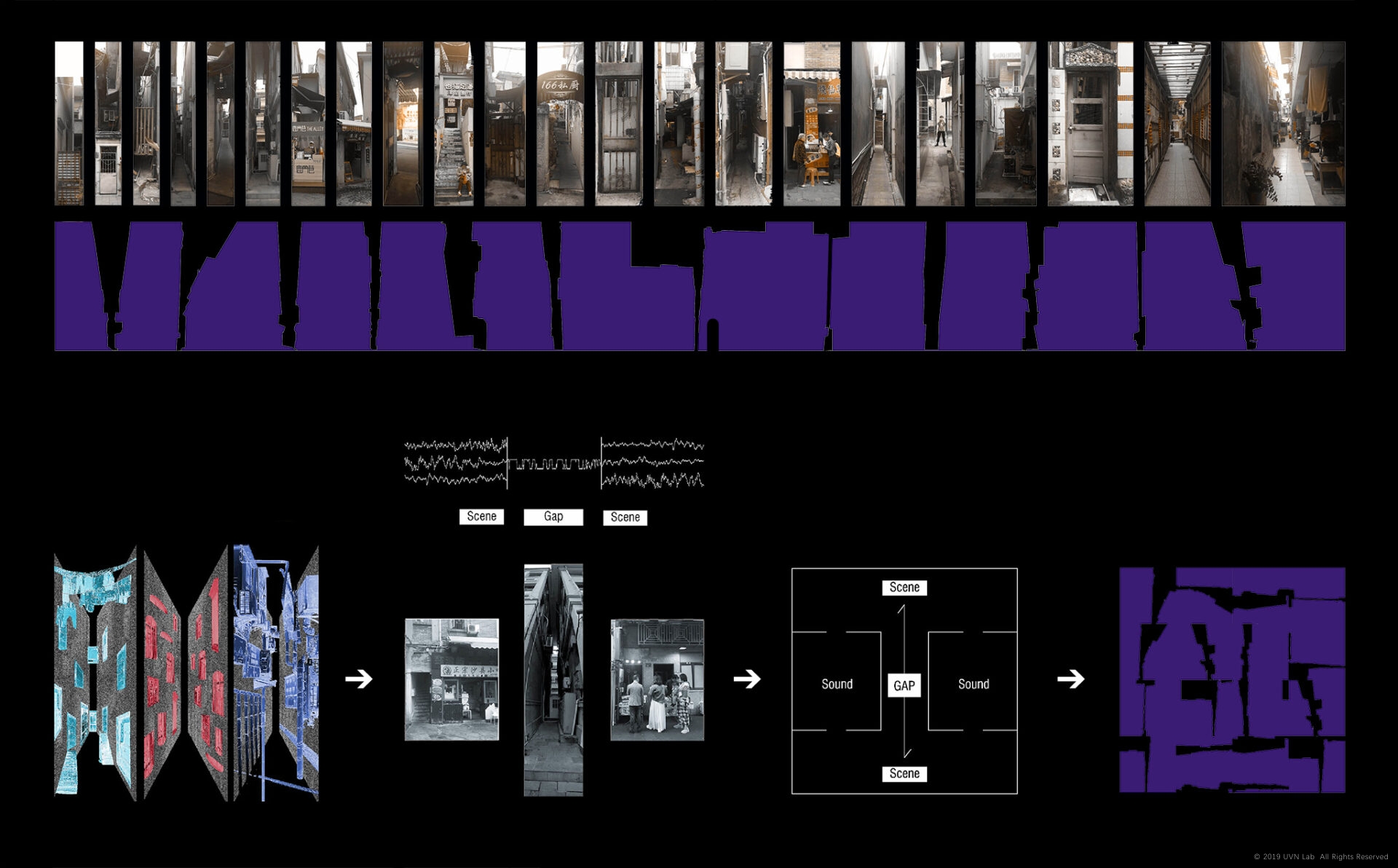
GAP - the back alley way of urban soundscape
The prototype
When I walked through Kulangsu, I noticed those GAPs – hidden behind the crowded streets, even narrower than alleys. Kulangsu is an island of GAPs – which connected spaces of houses, streets, backyards or beach. I subtracted GAPs from urban space, as an acoustical space connecting soundscapes from both sides.
Outside the GAP
As a binary structure from point to point, the GAP divides urban spaces, and connects, mix, filter and compress sounds from both ends. In GAPs, the visual range is limited. What we could see is the ray of sky above our heads – the GAP is a devisualized aural structure. Sound fades in and out – spaces are mixed and compressed ambiguously. as we walk through the GAP.
Inside the GAP
We discover the hidden machine of Kulangsu – wires, workers, sewages – behind the commercial noise of the front street, the GAPs holds enormous infrastructures, machines and data streams, like the most sophisticated element inside the gigantic sound mixer.
A computational sensory structure
How do we re-interpret the structure, defining Kulangsu as an on-going experience, as a new perspective on sensory history of urban space?
The new museum for Kulangsu define performed “presence” by means of
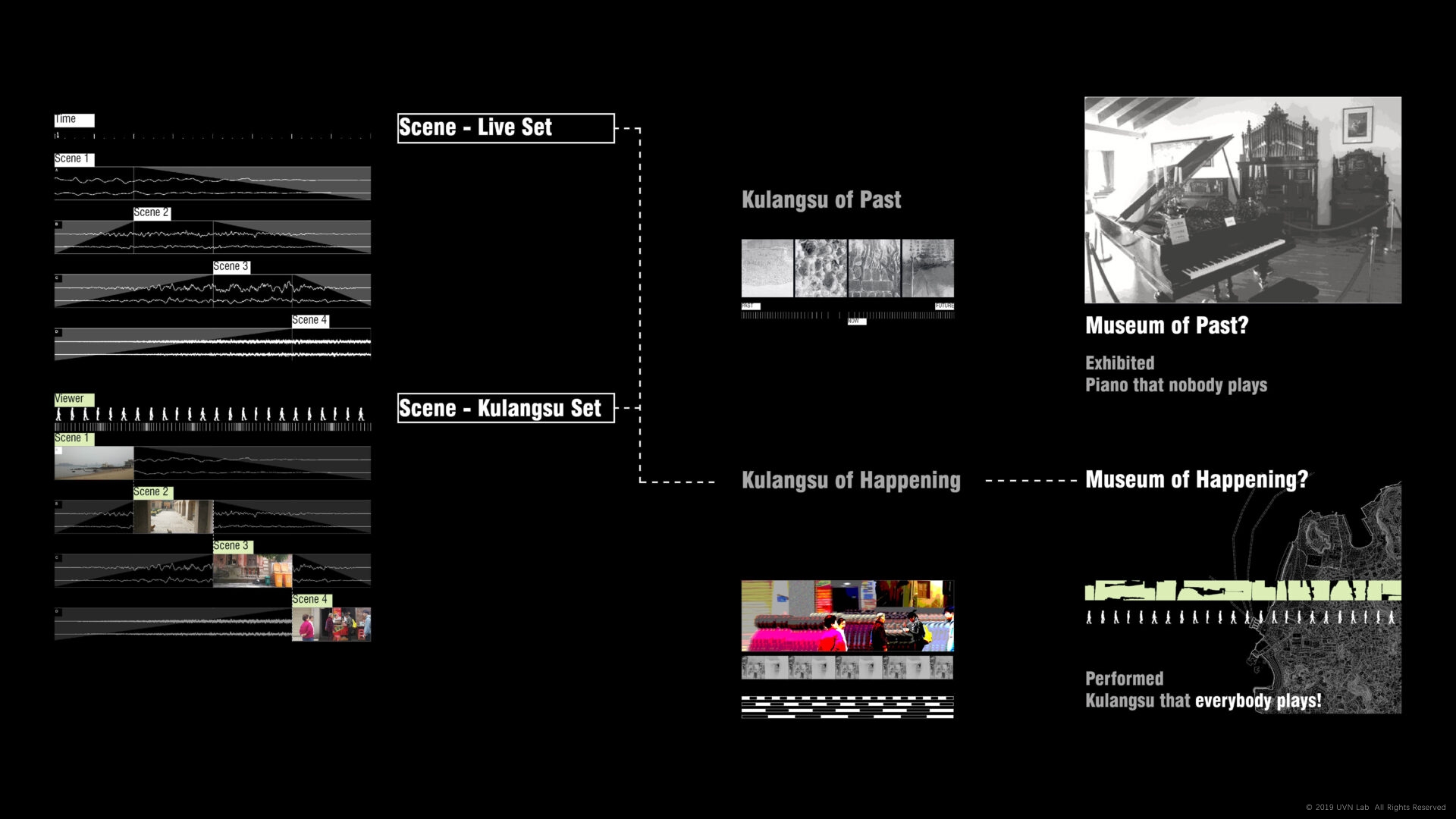
Our footsteps replace timeline, unfolding composed scenes as a linear sensory. When people walked through the GAPs, through different scenes and ambiences, like how narrative progress through looped sounds and patterns of Live Set and Synth Live – and GAP resonate with the structure, as a walkable musical progression through soundscapes. What soundscape is divided by GAP? How do we experience Kulangsu inside?
Meanwhile, museums on Kulangsu treat the history as a static linear exhibition – how do we create new architecture of sounds for the presence of on-going Kulangsu?
ARCHITECTURES OF SOUND
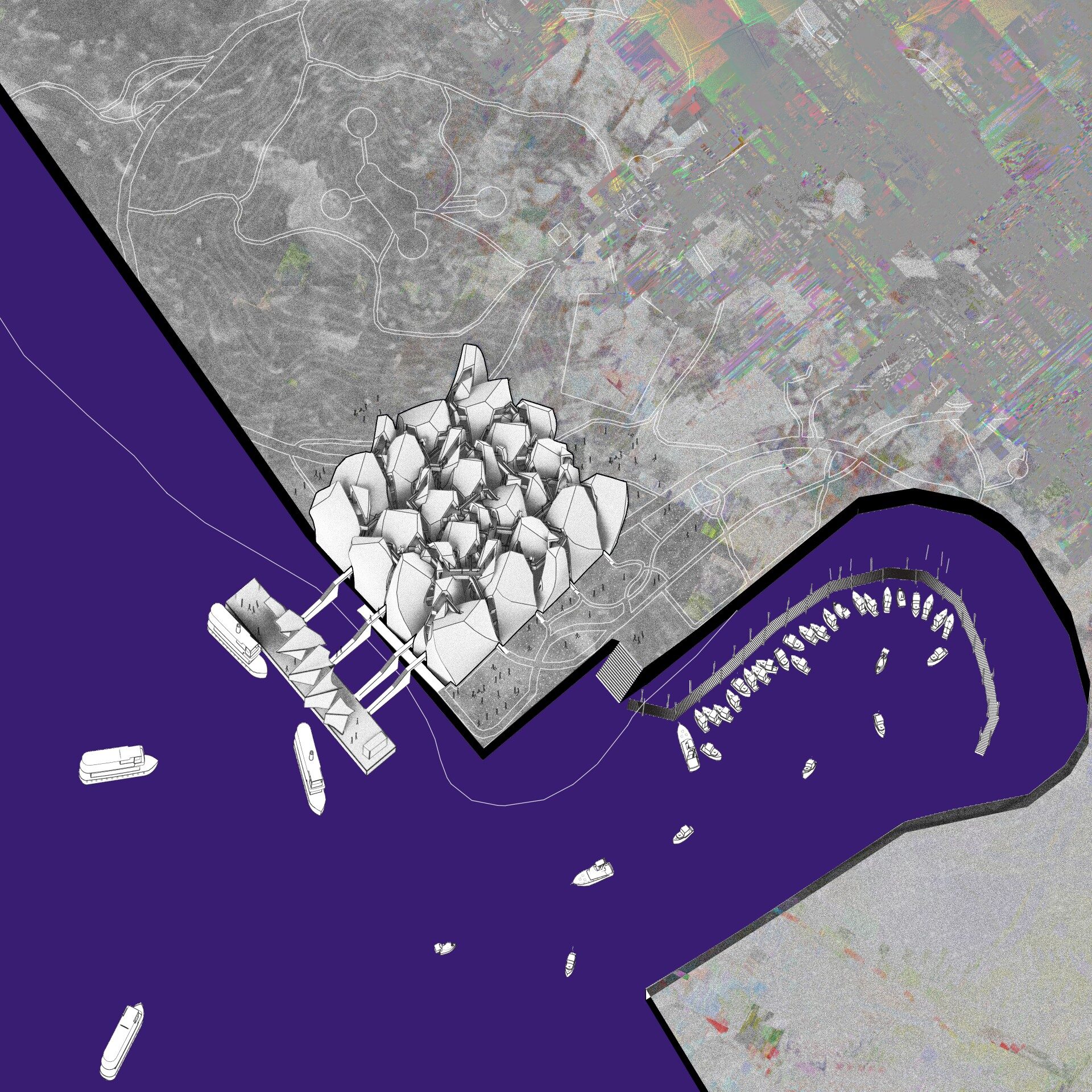
GAP+
Instrument units and sample units are designed in pairs and embedded in curved chambers of community space. Sample Units are connected with samplers, which collect and store sound from GAPs in Kulangsu. While walking through the space, we experience a remixed soundscape of the whole Kulangsu. Instrument Units are semi-open gallery spaces, audiences tracked by sensors trigger notes of the performance.
To record and exhibit the sound of on-going Kulangsu? Could audience becomes a performer of their own “Kulangsu Set”?
“GAP +” – a spatial structure wandering out of Kulangsu. By just walking, people interact with the space revealing the first chapter to Kulangsu.
Generative Re-synthesis
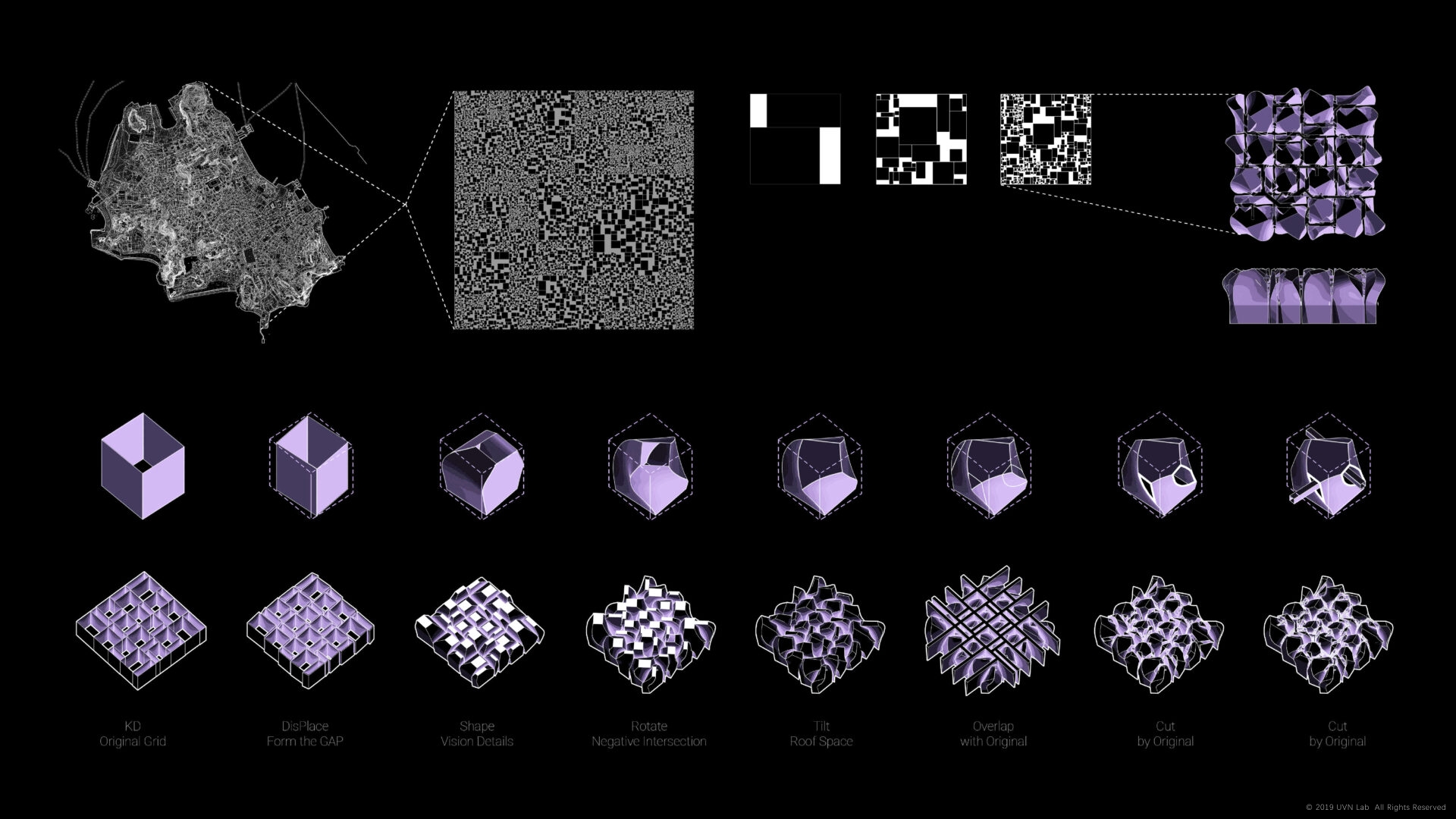
A space consists of GAPs
As a K-D Tree system, GAP+ is a space of narrow gaps. By overlapping the twisted grid with the original grid, a complex space system of holes and tunnels is generated, creating a multi-layer structure allowing sound to transmit through space with varied reflections and absorptions. From bottom to the top, single spaces are gradually open and soundscapes becomes intersected.
An Instrumental Architecture
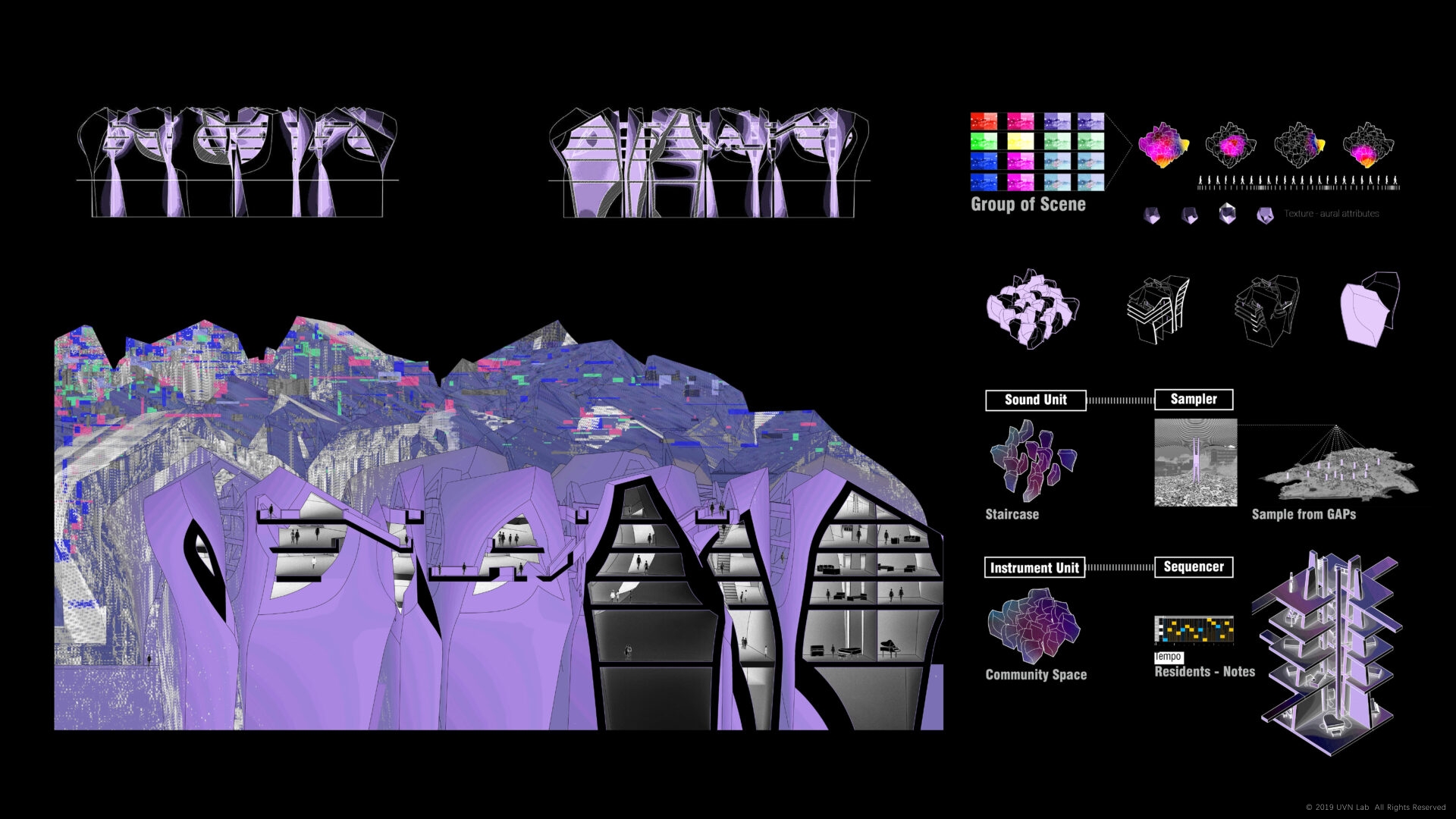
Before entering the island, people get into “GAP+” at the dock. “GAP+” is open to all visitors, inviting everyone to a spatial performance. Instrument Units and Sample Units are designed in pairs, for vertical circulation and community space. Sample Units are connected with remote samplers in the alleyways of Kulangsu, which collect and store sounds from the hidden aspect of Kulangsu. While walking through, we are experiencing a micro Kulangsu. Instrument Units are semi-open community spaces, new residents can fine tune notes of the performance, utilizing a mechanism of Sequencer.
Non-linear Spatial Sequence
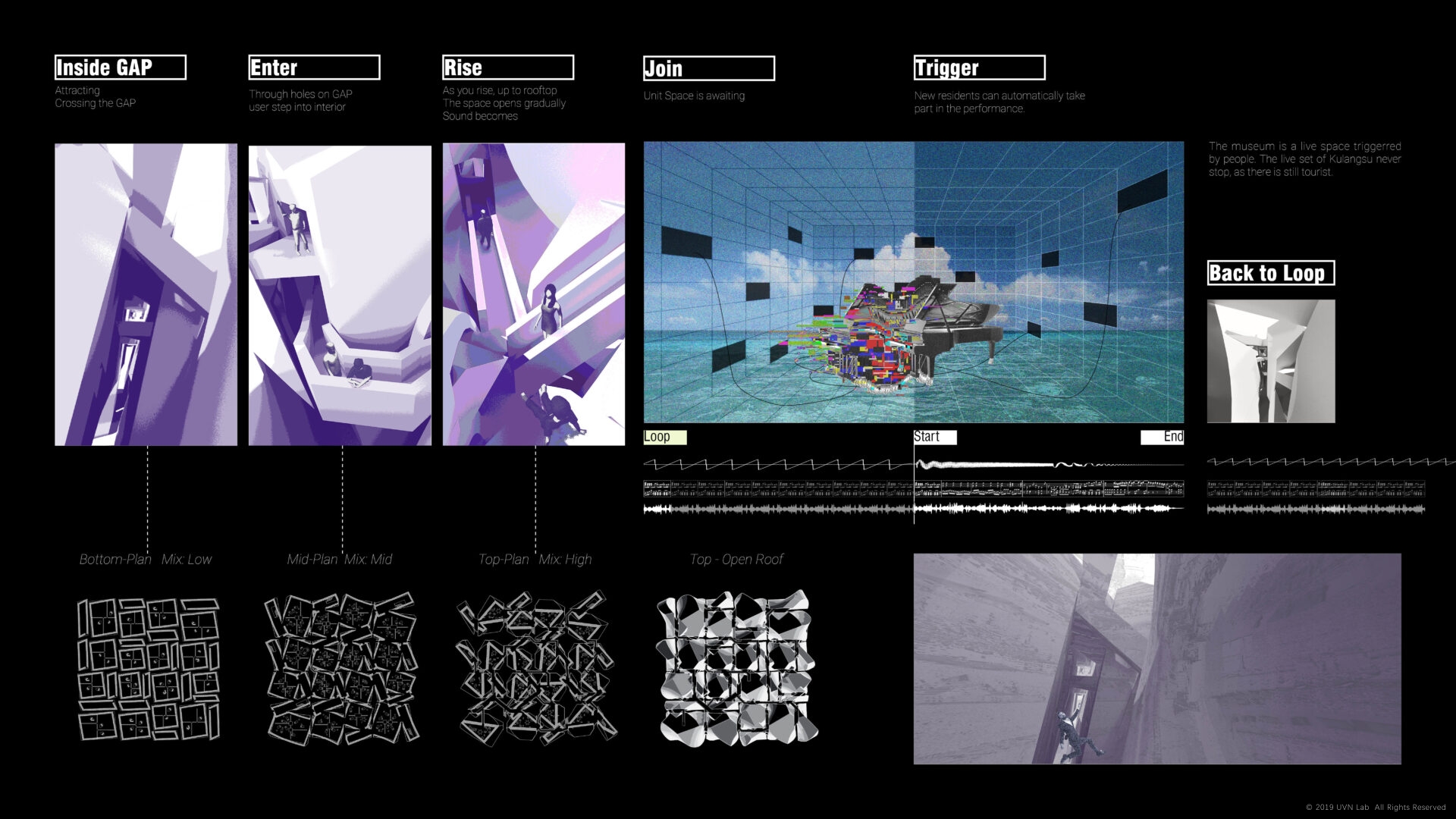
Space is awaiting for visitors when people are wandering outside of units. Loops of ambient sounds and piano loops, untill we enter the unit from gaps. Indoor sounds react to audiences, transmitting through the wall and mixed in the air, attracting latecomers to the building as new visitors. The sound museum is an ever-lasting and evolving soundscape structure triggered by new visitors, making everyone as a performer of the architecture.
INSTALLATION
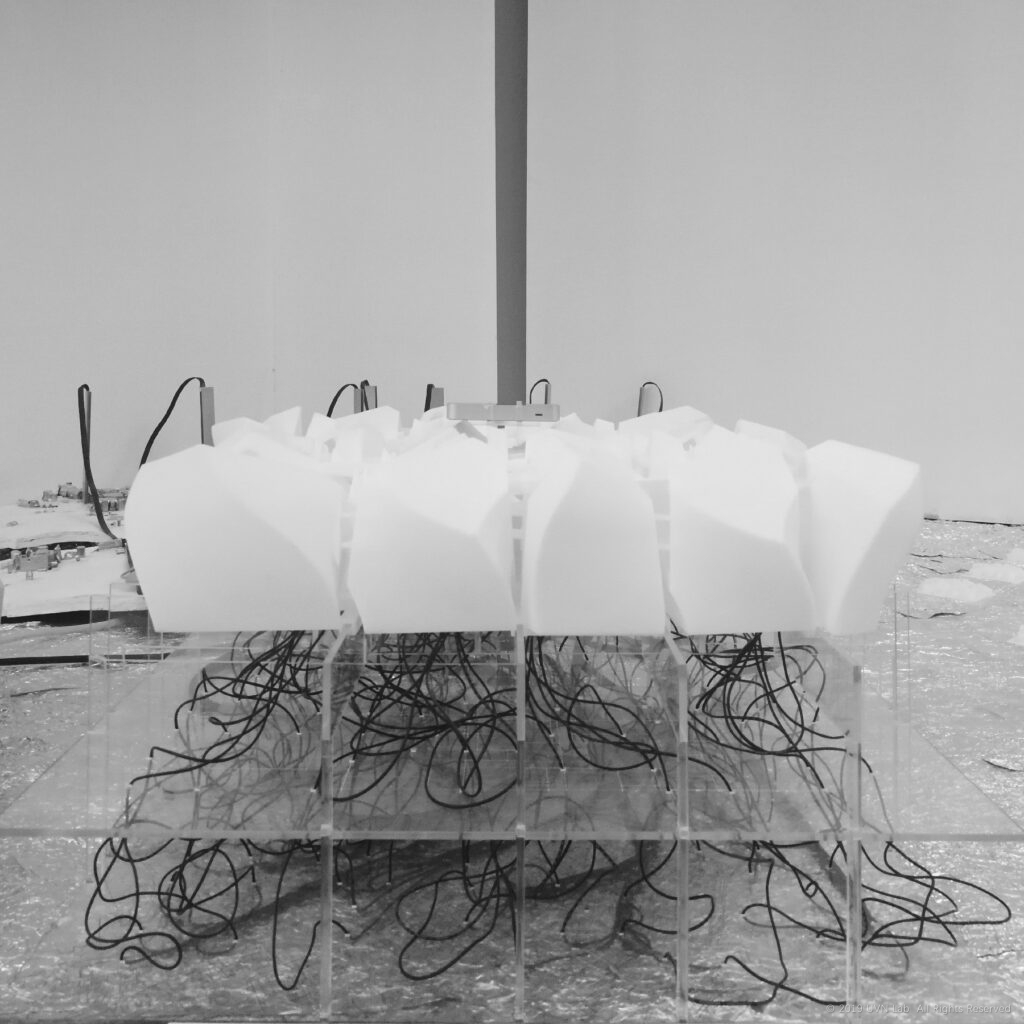
GAP-
With sensors and a spatial audio system built with c# and MAX/MSP, it translates space information into sound scenes. By collecting sound in Kulangsu, what we play on GAP- HERE, is connected to THEREs on Kulangsu.
The “GAP-” allows audience to control a Spatialized Live Set structure, in a spatial-synthesis way – by fetchinging spatial data of hand gestures, space becomes the guideline for audio generation and virtual tour through the space, making the piece a new instrument for general audiences – which works as implicit-to-explicit, to generate visual and space based on the guideline of sound.
In the coordinate of “GAP-“, areas are distributed with specific ambience. In the same area, several similar clip pools of possibilities are picked for each ambient sound mixing – when user re-trigger an area, the clips will be re-assigned – clips are changing, but the ambience never change.
Spatial Synthesis Framework
Inspired by structure of Live Set Performance, as an allegory to urban space structure. The system enables performance through gestures.
Space is divided into different regions, which is similar to a spatialization of a “Live Set” structure, functions as spatially distributed audio groups. Each group has its own attributes(loop, speed, quantization clocks, volume, audio effects and reverb sizes). While the represented user location switching from one region to another, different audio groups are triggered on clock, like a musical system. Meanwhile, the height of user/hand defines the parameter of audio effect, which is defined as frequency value of a low-pass filter in the set of GAP+.
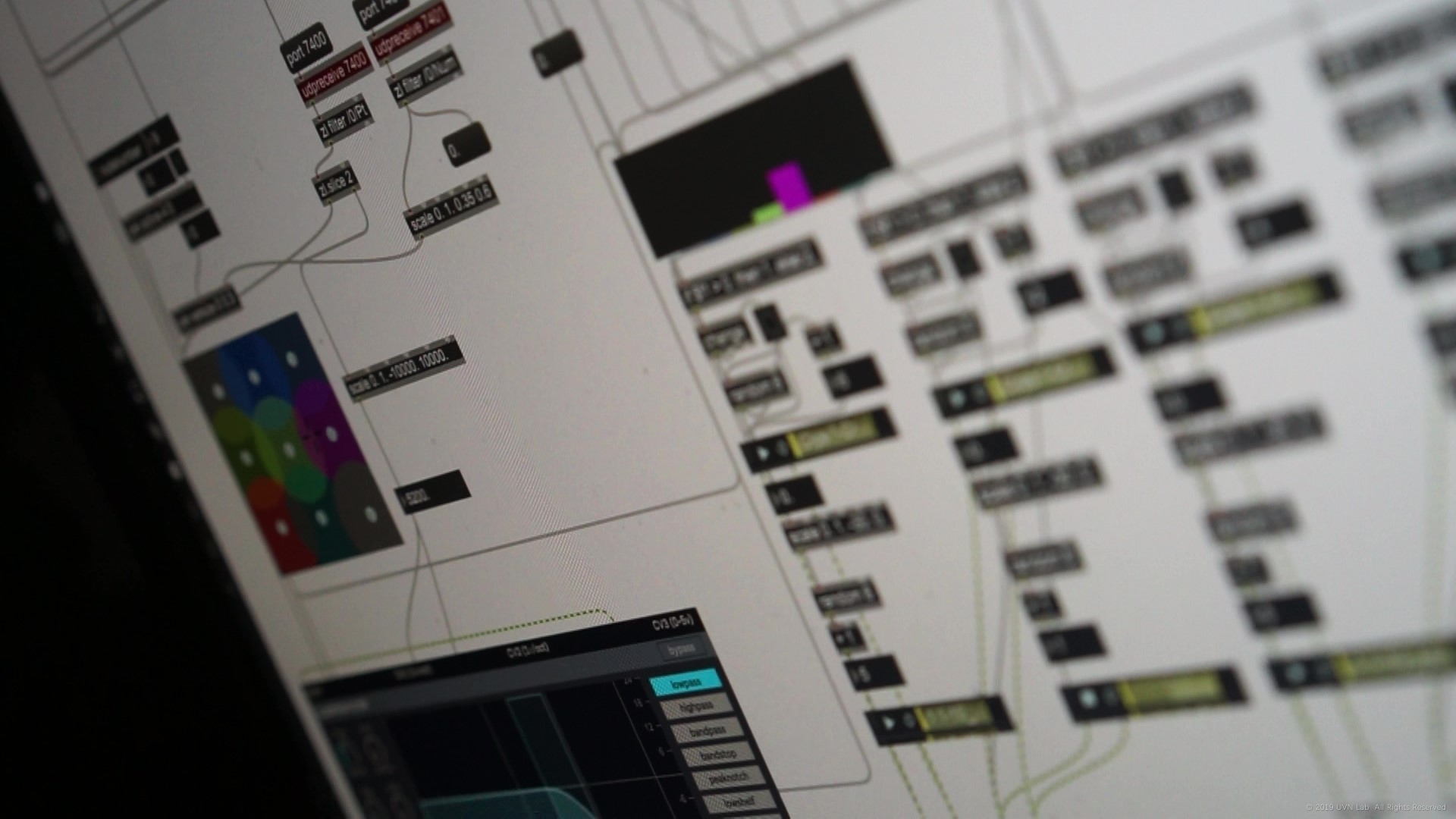
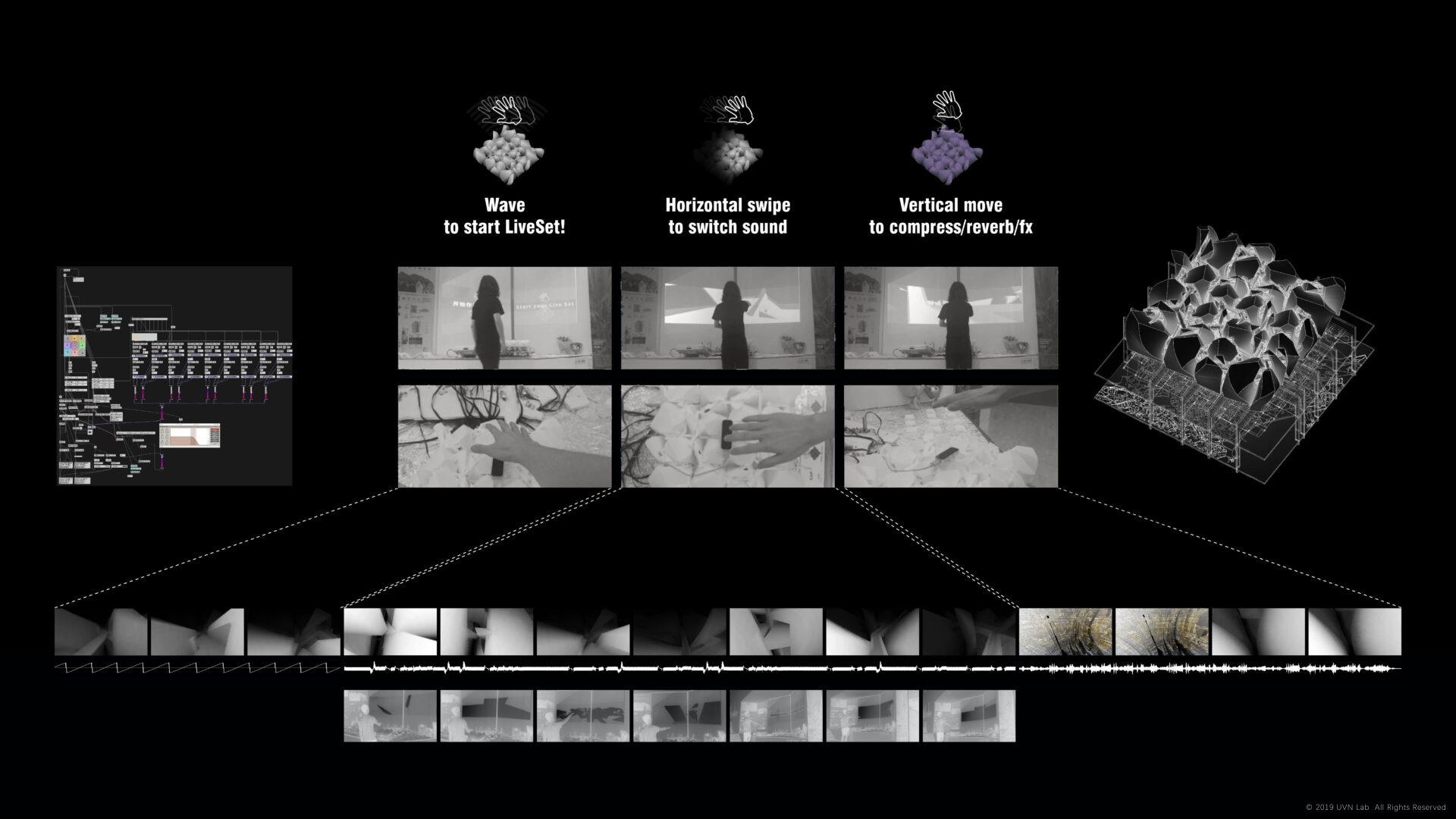
1.Wave to start LiveSet!
2. Swipe horizontally to switch clips
3. Move vertically to compress/reverb/fx “GAP-” is a standard controller to perform a Live Set. It’s also a remote sound museum played by audience at exhibition connecting to GAP+ – the Kulangsu is happening HERE.
The installation is a wandering derivative from Kulangsu itself. With connecting audience to Kulangsu’s soundscape with – GAP is mixing spaces inside itself, as well as between “HERE” and “THERE”.
MORE ABOUT THIS PROJECT:
An early essay written in 2019, about the first iteration in the thesis project at CAFA.